Typeerror ‘Method’ Object Is Not Subscriptable
Python is a versatile programming language that allows developers to create complex applications and solve problems efficiently. However, like any other programming language, Python too has its share of errors and exceptions that developers may encounter while writing code. One such error is the TypeError: ‘method’ object is not subscriptable. In this article, we will explore the reasons behind this error, its implications, and how to fix it.
What is a ‘method’ object and its role in Python programming
In Python, a method is a function defined inside a class. It is associated with an object and can be called using dot notation. Methods are used to perform specific actions or manipulations on the data stored within an object. They can access and modify the object’s attributes and can also have arguments passed to them.
For example, consider a class called ‘Person’ which has a method called ‘get_name’. The ‘get_name’ method can be used to retrieve the name of a person object. Here’s an example of how the method is called:
“`python
class Person:
def __init__(self, name):
self.name = name
def get_name(self):
return self.name
person = Person(“John”)
name = person.get_name()
print(name) # Output: John
“`
In this example, the ‘get_name’ method is defined inside the ‘Person’ class. When the method is called using the dot notation (person.get_name()), it returns the name attribute of the ‘person’ object.
Exploring the concept of subscriptable objects in Python
In Python, subscriptable objects are objects that can be indexed using square brackets. This means that you can access individual elements or slices of elements within the object using indexing syntax. Examples of subscriptable objects include lists, tuples, strings, and dictionaries.
For example, consider a list called ‘my_list’ with the following elements: [1, 2, 3, 4]. We can access individual elements of the list using square brackets as shown below:
“`python
my_list = [1, 2, 3, 4]
first_element = my_list[0]
print(first_element) # Output: 1
“`
In this example, we’re accessing the first element of the list using the index 0 (my_list[0]). This syntax is possible because lists in Python are subscriptable objects.
Common scenarios leading to the TypeError: ‘method’ object is not subscriptable
The TypeError: ‘method’ object is not subscriptable occurs when you try to use subscript notation on a method object instead of a subscriptable object. This can happen in a variety of scenarios, such as:
1. Accidentally using parentheses instead of square brackets: Parentheses are used to invoke methods, whereas square brackets are used to access elements within objects. If you mistakenly use parentheses instead of square brackets, Python will think you’re trying to access elements of a method object, resulting in the TypeError.
2. Incorrectly referring to a method object instead of its return value: Sometimes, you may accidentally try to subscript a method object directly instead of calling the method first and subscripts its return value. This can happen if you forget to include parentheses after the method name.
3. Storing a method object instead of its return value: Assigning a method to a variable without calling it and then trying to subscript the variable will result in the TypeError. This is because the variable contains the method object itself, not its return value.
Analyzing the reasons behind the occurrence of this error
The TypeError: ‘method’ object is not subscriptable occurs because method objects in Python are not subscriptable. Since methods are not subscriptable objects, trying to access elements within a method using square brackets will result in this error.
When you use square brackets to subscript an object, Python expects that object to be subscriptable. However, methods are not subscriptable objects, as they are callable functions associated with an instance of an object. Therefore, trying to access elements within a method will result in the ‘method’ object not subscriptable error.
Steps to debug and fix the TypeError: ‘method’ object is not subscriptable
When encountering the TypeError: ‘method’ object is not subscriptable, there are several steps you can take to debug and fix the error:
1. Check the code for incorrect usage of square brackets: Ensure that you are using square brackets correctly to access elements within subscriptable objects. Double-check if you accidentally used parentheses or referred to a method object instead of its return value.
2. Verify if you are subscripting the correct variable: Make sure you are subscripting the correct variable and ensure that it is a subscriptable object. If you are subscripting a variable that contains a method object, consider calling the method and subscripting its return value instead.
3. Analyze the types of objects involved: Check the types of objects involved in the operation that caused the error. It’s possible that you are trying to subscript a method object, but intended to subscript a different object such as a list or a string.
4. Use print statements or a debugger: If you’re still unable to identify the cause of the error, consider using print statements or a debugger to analyze the values of variables and identify any potential issues.
Alternative approaches to overcome this error
If you encounter the TypeError: ‘method’ object is not subscriptable, there are a few alternative approaches you can take to overcome this error:
1. Call the method and then subscript its return value: If you intended to access elements within an object but accidentally tried to subscript a method object, simply call the method and then subscript its return value. This ensures that you’re accessing elements within the object instead of the method.
2. Check if the method returns a subscriptable object: If the method is defined by you or within a library, verify its return type. If the method returns a subscriptable object, ensure that you’re correctly capturing the return value and subscripting it instead of the method object itself.
3. Modify the code to use the method output differently: If subscripting the return value is not possible or not appropriate for your use case, consider revising the code to use the method’s output in a different way that doesn’t involve subscripting.
Comparing the TypeError: ‘method’ object is not subscriptable with other similar Python error messages
There are several similar error messages in Python that are related to the TypeError: ‘method’ object is not subscriptable. Let’s briefly compare them:
1. TypeError: ‘builtin_function_or_method’ object is not subscriptable: This error occurs when you try to subscript a built-in function or method object instead of calling it or accessing its attributes. It is similar to the TypeError: ‘method’ object is not subscriptable but specifically for built-in functions or methods.
2. TypeError: ‘type’ object is not subscriptable: This error occurs when you mistakenly try to use square brackets to subscript a type object instead of attempting to instantiate it or access its attributes. It is similar to the TypeError: ‘method’ object is not subscriptable but specifically for type objects.
3. ‘Object’ is not subscriptable / ‘Object’ is not subscriptable Python class: These errors occur when you try to subscript an object that is not subscriptable, which means the object does not support indexing using square brackets. These errors are similar to the TypeError: ‘method’ object is not subscriptable but refer to generic objects without specifying their specific type.
Best practices to prevent the occurrence of this error
To prevent the occurrence of the TypeError: ‘method’ object is not subscriptable and similar errors, it is important to follow these best practices:
1. Carefully check your code for correct usage of square brackets: Double-check if you are using square brackets correctly to access elements within subscriptable objects. Be mindful of accidentally using parentheses or referring to method objects instead of their return values.
2. Understand the types of objects involved: Have a clear understanding of the types of objects involved in an operation. Make sure you are subscripting the correct object and ensure that it is a subscriptable object.
3. Avoid storing method objects without calling them: If you need to store the output of a method in a variable, remember to call the method first before assigning the return value to the variable. This ensures that the variable contains the return value of the method, not the method object itself.
4. Test code incrementally: Test your code incrementally and utilize print statements or debuggers to analyze the values of variables at different stages. This can help identify any issues related to incorrect subscripting.
Resources and references for further learning about this error
If you would like to learn more about the TypeError: ‘method’ object is not subscriptable and related errors, here are some resources and references to explore:
– Python Documentation: https://docs.python.org/3/tutorial/errors.html
– Stack Overflow: https://stackoverflow.com/questions/11527186/typeerror-method-object-is-not-subscriptable
– GeeksforGeeks: https://www.geeksforgeeks.org/python-typeerror-method-object-is-not-subscriptable/
– Real Python: https://realpython.com/python3-object-oriented-programming/#methods
– Python Crash Course by Eric Matthes: https://nostarch.com/pythoncrashcourse2e
How To Fix Object Is Not Subscriptable In Python
What Does Method Object Is Not Subscriptable Mean In Python?
Python is a powerful and versatile programming language that allows developers to write concise and readable code. However, like any programming language, Python has its own set of error messages that can sometimes be confusing, especially for beginners.
One such error message that you might encounter while working with Python is “TypeError: ‘method’ object is not subscriptable.” This error occurs when you try to access an index or element of an object that does not support indexing, such as a method object.
To truly understand this error message, let’s break it down into smaller parts.
TypeError: This is the type of error that Python raises when there’s a problem with the types of variables or arguments used in a statement or function.
‘method’ object: In Python, a method is a function that is associated with a class or an instance of a class. It is defined within a class and can access the attributes and methods of that class. In the context of the error message, a method object refers to a particular method that is being accessed.
Not subscriptable: Subscripting or indexing is the process of accessing elements or items in a sequence, such as a list or a string, using square brackets. For example, if you have a list called fruits, you can access the first element by using fruits[0]. The term “not subscriptable” indicates that the method object you are trying to access does not support indexing.
So, when you encounter the error message “TypeError: ‘method’ object is not subscriptable,” it means that you are trying to access elements or perform indexing operations on a method object, which is not allowed.
Now that we understand the meaning behind this error message, let’s take a look at some common scenarios where this error might occur:
1. Forgetting to call the method: One common mistake that can trigger this error is forgetting to call a method. In Python, you need to use parentheses after the method name to call it. For example, instead of writing obj.method, you should write obj.method(). Failing to include the parentheses will cause the error because you are trying to access the method itself instead of invoking it.
2. Assigning a method to a variable: In Python, you can assign methods to variables just like any other object. However, when you assign a method to a variable without calling it, you end up with a method object. If you try to subscript or access elements of this method object, you will encounter the “method object is not subscriptable” error.
3. Trying to access non-existent attributes or methods: Another situation where you might encounter this error is when you mistakenly try to access attributes or methods that do not exist. Double-check that the attribute or method you are trying to access is correctly spelled and exists within the class or instance.
FAQs:
Q: How can I fix the “method object is not subscriptable” error?
A: To fix this error, ensure that you are calling the method with the correct syntax. If you are assigning a method to a variable, make sure to call the method when necessary. Additionally, double-check that the attributes or methods you are trying to access actually exist.
Q: Why am I getting this error when I’m trying to access an element in a list?
A: This error message specifically pertains to method objects, not lists or other sequence types. If you encounter this error while accessing elements in a list, the problem might lie elsewhere in your code. Double-check that you are indexing the list correctly.
Q: Can I subscript or access elements of a method object?
A: No, method objects do not support subscripting or indexing. They are meant to execute functionality and cannot be treated like sequence types such as lists or strings.
Q: What’s the difference between a function and a method in Python?
A: A function is a block of code that is organized and can perform a specific task. It can be called from anywhere in the code. On the other hand, a method is a function that is associated with a class or an instance of a class. It can access the attributes and methods of that class.
In conclusion, encountering the “method object is not subscriptable” error in Python usually indicates that you are trying to access or perform indexing operations on a method object, which is not allowed. To rectify this error, ensure the correct syntax when calling methods and double-check that the attributes or methods you are trying to access exist within the class or instance. By understanding the meaning behind the error message, you’ll be better equipped to troubleshoot and debug your Python code.
What Does [-] Nonetype Object Is Not Subscriptable?
If you have been using Python programming language for a while, you might have come across the error message “TypeError: ‘NoneType’ object is not subscriptable.” This error is quite common, especially for beginner programmers who are still learning the ins and outs of Python. In this article, we will dive into the details of this error and understand what it means, why it occurs, and how to fix it.
Understanding the Error:
To understand the “NoneType object is not subscriptable” error, we first need to be familiar with what a NoneType object is in Python. NoneType is a special type in Python that represents the absence of a value or a null value. It is used when a variable does not have any assigned value.
The error message itself indicates that you are trying to access a subscriptable object or an element within an object that is of NoneType. Subscriptable objects refer to those that can be indexed or sliced into smaller parts, like lists, strings, and tuples. However, since the NoneType object does not support indexing or slicing, you encounter this error when you try to perform such operations on it.
Common Causes of the Error:
Now that we understand what the error message means, let’s look at some common scenarios where you might encounter it:
1. Uninitialized Variables:
If you attempt to access an index or element of a variable that has not been initialized, it will default to NoneType. For example:
“`
my_list = None
print(my_list[0])
“`
In this case, since my_list is set to None, you will receive the “NoneType object is not subscriptable” error when trying to access its first element.
2. Functions Returning None:
When a function does not explicitly return a value, Python automatically assigns a None value to it. If you try to perform indexing or slicing operations on the returned value, you will encounter this error. For example:
“`
def get_data():
# … Some code …
return # No explicit return value
result = get_data()
print(result[0])
“`
Since the get_data() function does not have a return value, result is set to None, and trying to access the first element of None causes the error.
3. Incorrect Variable Assignment:
Another common scenario is when you mistakenly assign a None value to a variable that you expect to hold a subscriptable object. For instance:
“`
my_list = [1, 2, 3]
my_value = my_list.find(2)
“`
In this case, the find() method does not exist for lists in Python, so it returns None. Consequently, assigning this None value to my_value will result in the “NoneType object is not subscriptable” error when you try to access its elements.
Solutions and Workarounds:
Fortunately, there are several ways to resolve the “NoneType object is not subscriptable” error:
1. Check for None:
Before accessing a subscriptable object, ensure that it is not None. You can validate this by using an if statement:
“`
if my_list is not None:
print(my_list[0])
“`
By verifying if my_list is not None, you prevent the error from occurring.
2. Ensure Variable Initialization:
Make sure to initialize variables properly before attempting to access their elements. For instance:
“`
my_list = []
# … Some code …
print(my_list[0]) # Safe to access elements now
“`
By initializing my_list as an empty list, you avoid the NoneType error.
3. Handle None Values in Functions:
When designing functions, consider handling None values explicitly. You can either check if the returned value is None before accessing its elements or assign a default value to it. Here’s an example:
“`
def get_data():
# … Some code …
if some_condition:
return result
else:
return []
result = get_data()
if result is not None:
print(result[0])
“`
By ensuring that a list is always returned (even if empty) instead of None, you can safely access its elements.
4. Review Variable Assignments:
Review your code to ensure that you are correctly assigning values to variables. Verify that the assigned values are of the expected type and not None when expecting a subscriptable object.
Frequently Asked Questions (FAQs):
Q1. Can this error occur with other subscriptable objects besides lists?
A1. Yes, this error can occur with other subscriptable objects such as strings and tuples as well.
Q2. Why does Python use the None value instead of throwing an error directly?
A2. Python uses the None value to indicate the absence of a value, providing a way to handle non-existent or optional values in a more predictable manner.
Q3. Is it possible to convert a NoneType object into a subscriptable object?
A3. No, NoneType objects are immutable, and you cannot directly convert them into subscriptable objects. It is best to handle NoneType values properly to avoid errors.
Q4. What other errors might occur due to NoneType objects in Python?
A4. Some other common errors due to NoneType objects include “TypeError: ‘NoneType’ object is not iterable” and “TypeError: unsupported operand type(s) for +: ‘NoneType’ and ‘int’.”
Q5. How can I debug the “NoneType object is not subscriptable” error?
A5. Use print statements and check the variable assignments and returns to identify where the NoneType object originates. Additionally, reviewing the traceback will help pinpoint the exact line where the error occurred.
In conclusion, the “NoneType object is not subscriptable” error occurs when you try to access elements of a NoneType object using indexing or slicing operations. By understanding the causes of this error and following the recommended solutions and workarounds explained in this article, you can effectively handle such situations and write Python code that is both robust and error-free.
Keywords searched by users: typeerror ‘method’ object is not subscriptable TypeError: ‘builtin_function_or_method’ object is not subscriptable, Method’ object is not subscriptable flask, Object is not subscriptable, Object is not subscriptable Python class, TypeError: ‘type’ object is not subscriptable
Categories: Top 62 Typeerror ‘Method’ Object Is Not Subscriptable
See more here: nhanvietluanvan.com
Typeerror: ‘Builtin_Function_Or_Method’ Object Is Not Subscriptable
In the realm of programming, encountering errors is an inevitable part of the process. One such error that programmers often come across is the dreaded TypeError: ‘builtin_function_or_method’ object is not subscriptable. This error message can be quite perplexing, especially for beginners, but fear not! In this article, we will explore what this error means, why it occurs, and how you can address it in your code. So, let’s dive in!
Understanding the Error:
The TypeError: ‘builtin_function_or_method’ object is not subscriptable error typically occurs when you attempt to access an element from an object that does not support subscripting. In simpler terms, it means you are trying to use square brackets to access an item within an object that cannot be accessed in such a manner.
To better comprehend this error, let’s consider an example:
“`python
my_func = print
print(my_func[0]) # Raises TypeError: ‘builtin_function_or_method’ object is not subscriptable
“`
In this code snippet, we are assigning the built-in print function to a variable “my_func”. Subsequently, we attempt to access the first element of “my_func” using square brackets, resulting in a TypeError. This error occurs because the print function in Python is not subscriptable.
Reasons for the Error:
The TypeError: ‘builtin_function_or_method’ object is not subscriptable generally arises due to the nature of the object you are trying to access. Some common reasons for encountering this error include:
1. Built-in Functions: As demonstrated in the example above, built-in functions in Python, like print, do not allow subscription. These functions are designed to perform specific actions and do not provide direct access to their individual elements.
2. Immutable Objects: Immutable objects, such as numbers, strings, and tuples, are also not subscriptable. Since you cannot modify these objects after creation, subscripting may not be applicable.
3. Custom Objects: If you are working with custom objects, it is possible to encounter this error if you haven’t implemented subscripting within your class. By default, objects do not support subscripting unless specifically defined in their implementation.
Resolving the Error:
Now that we have a grasp of what the TypeError: ‘builtin_function_or_method’ object is not subscriptable error entails, let’s explore some ways to address it within your code:
1. Verify Object Types: Start by double-checking the object you are trying to subscript. Ensure it is not a built-in function or an immutable object. If it is, subscripting is not supported, so you may need to utilize alternative methods to achieve your desired outcome.
2. Evaluate Custom Object Implementations: If you encounter this error with custom objects, review their implementation. Ensure that subscripting is explicitly defined if you intend to access elements using square brackets. You may need to make appropriate changes to your object’s class definition.
3. Utilize Appropriate Methods: When dealing with objects that are not subscriptable, consider alternative methods available for accessing elements. For instance, instead of using square brackets, you could use object-specific methods like “get”, “find”, or “index” to retrieve the desired element.
FAQs:
Q1. Can I convert a built-in function to a subscriptable object?
While it is not possible to directly convert a built-in function into a subscriptable object, you can create a subclass of the function and implement subscripting in the subclass. This way, you can add subscripting functionality to the built-in function.
Q2. What are the advantages of using subscripting over other methods?
Subscripting offers a convenient and familiar syntax for accessing elements within objects. It is often the preferred method for handling sequences like lists and arrays. However, it is not applicable to all types of objects, and alternative methods may be necessary.
Q3. Are all custom objects subscriptable by default?
No, by default, custom objects do not support subscripting. You need to explicitly implement subscripting methods like “__getitem__” and “__setitem__” within your object’s class definition to make it subscriptable.
Q4. How can I avoid encountering this error?
To avoid this error, it is important to be aware of the object types you are working with and their subscripting capabilities. Always verify the documentation or implementation of objects used in subscripting operations.
Method’ Object Is Not Subscriptable Flask
Introduction
Flask is a popular Python framework used for developing web applications. With its simplicity and flexibility, Flask has gained a huge developer community. However, like any other framework, Flask has its quirks and pitfalls. One error that developers often encounter is the “Method’ object is not subscriptable” error. In this article, we will delve into the causes of this error, discuss its solutions, and provide some FAQs for further clarification.
Understanding the Error
When you encounter the error “Method’ object is not subscriptable”, it means that you are trying to use square brackets to access an element of an object that cannot be accessed in that way. In Flask, this error often occurs when developers are attempting to access a form field value in the request object.
This error is usually triggered by the following line of code:
“`python
input_value = request.form[‘input_field’]
“`
In this case, `request.form` returns an instance of the ImmutableMultiDict class in Flask, which is not subscriptable. Hence, trying to access the form field using square brackets results in the “Method’ object is not subscriptable” error.
Solutions
To resolve this error, you can adopt one of the following approaches:
1. Use the `get()` method:
“`python
input_value = request.form.get(‘input_field’)
“`
By using the `get()` method instead of square brackets, you can retrieve the form field value without encountering the subscriptable error. The `get()` method returns None if the key is not found, allowing you to handle missing form fields gracefully.
2. Check if the key exists before accessing it:
“`python
if ‘input_field’ in request.form:
input_value = request.form[‘input_field’]
“`
In this approach, you explicitly check if the key exists in the ImmutableMultiDict object before attempting to access it. This can prevent the “Method’ object is not subscriptable” error from occurring.
3. Convert the ImmutableMultiDict object to a regular dictionary:
“`python
form_dict = dict(request.form)
input_value = form_dict[‘input_field’]
“`
By converting the ImmutableMultiDict object to a regular dictionary using the built-in `dict()` function, you can access its elements using square brackets. However, this approach creates a copy of the data, so it might not be efficient if dealing with large forms.
FAQs
Q1: Why does this error occur only with the request.form object in Flask?
A1: In Flask, the request.form object is an instance of the ImmutableMultiDict class. The ImmutableMultiDict class is used to store form data. Since it is immutable, you cannot modify its elements directly using square brackets, resulting in the “Method’ object is not subscriptable” error.
Q2: Can this error occur with other objects in Flask?
A2: While this error is more common with the request.form object, it can occur with any object that is not subscriptable. For example, if you have a custom object and attempt to access its elements using square brackets without implementing the `__getitem__` method, you might encounter the same error.
Q3: Is there any performance difference between the solutions mentioned?
A3: Yes, there is a slight performance difference between the solutions. The `get()` method and checking for key existence are generally more efficient since they involve fewer operations. Converting the ImmutableMultiDict to a dictionary creates a copy of the data, which might not be efficient for large forms.
Q4: Can this error occur in other programming languages or frameworks?
A4: While the specific error message might differ, similar issues can occur in other languages or frameworks when trying to access elements of non-subscriptable objects using square brackets. It is always important to understand the underlying data structures and their properties to avoid such errors.
Conclusion
Understanding the “Method’ object is not subscriptable” error is crucial for every Flask developer. By grasping the causes and solutions mentioned in this article, you can overcome this error and ensure smooth operation of your Flask applications. Remember to handle missing keys gracefully and choose the most efficient solution based on your specific use case. Happy Flask coding!
Word count: 952
Images related to the topic typeerror ‘method’ object is not subscriptable

Found 41 images related to typeerror ‘method’ object is not subscriptable theme

![Solved] TypeError: method Object is not Subscriptable - Python Pool Solved] Typeerror: Method Object Is Not Subscriptable - Python Pool](https://www.pythonpool.com/wp-content/uploads/2021/05/Untitled-1.png)

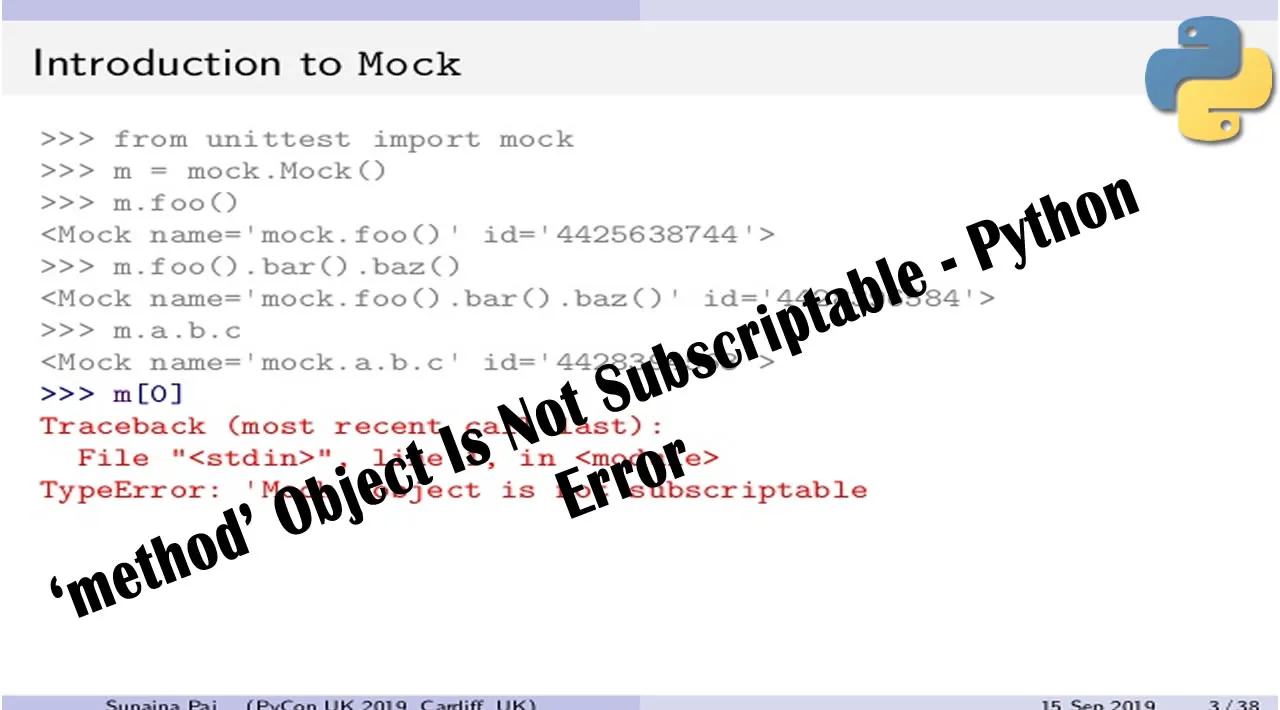


![Typeerror: method object is not subscriptable [SOLVED] Typeerror: Method Object Is Not Subscriptable [Solved]](https://itsourcecode.com/wp-content/uploads/2023/04/Typeerror-method-object-is-not-subscriptable.png)


![TypeError: builtin_function_or_method object is not subscriptable Python Error [SOLVED] Typeerror: Builtin_Function_Or_Method Object Is Not Subscriptable Python Error [Solved]](https://www.freecodecamp.org/news/content/images/2022/11/built_in_not_subable.png)

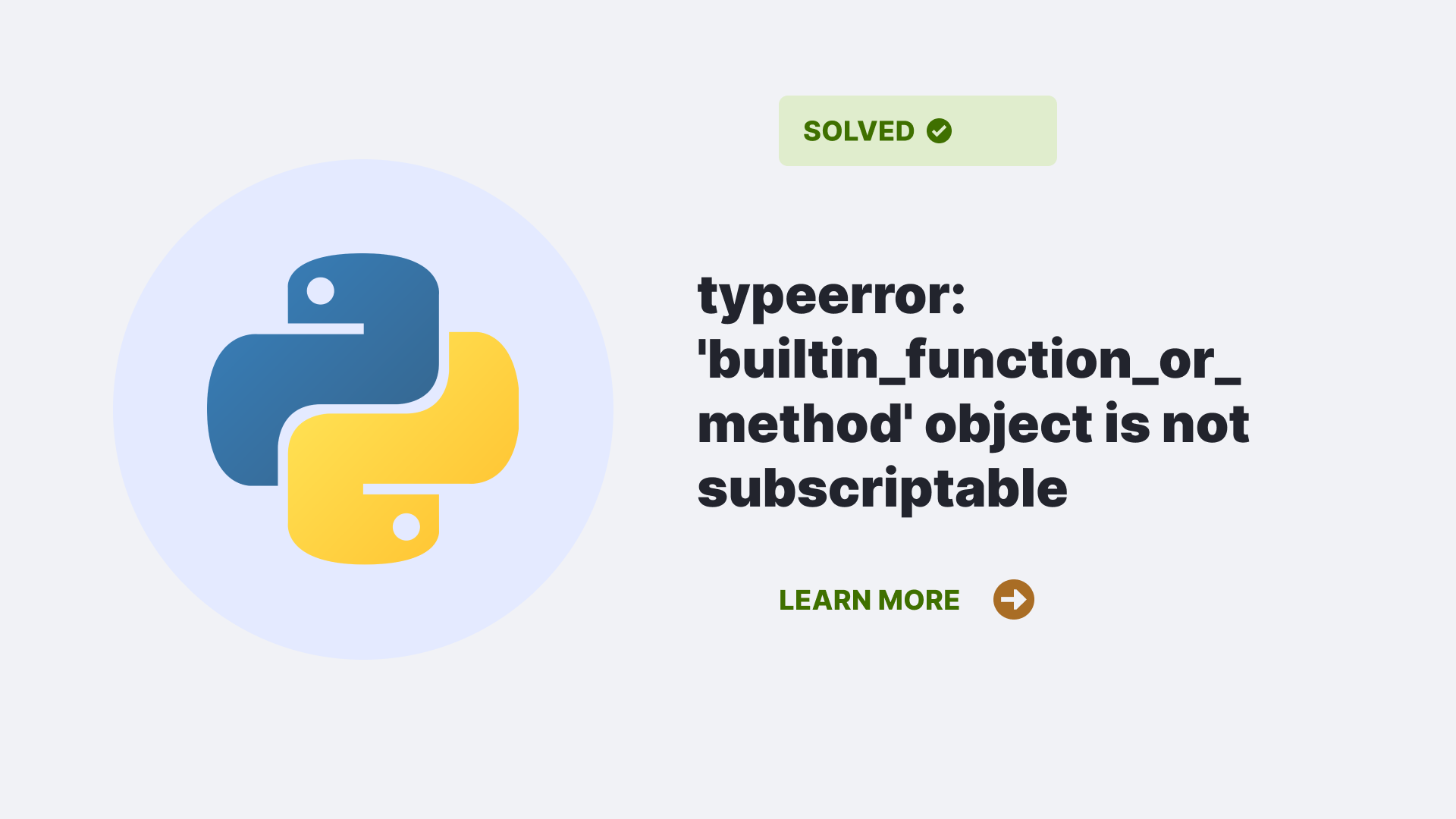

![Solved] TypeError: 'int' Object Is Not Subscriptable in Python | LaptrinhX Solved] Typeerror: 'Int' Object Is Not Subscriptable In Python | Laptrinhx](https://blog.finxter.com/wp-content/uploads/2021/03/typeError.png)
![typeerror: '_io.textiowrapper' object is not subscriptable [SOLVED] Typeerror: '_Io.Textiowrapper' Object Is Not Subscriptable [Solved]](https://itsourcecode.com/wp-content/uploads/2023/04/typeerror-_io.textiowrapper-object-is-not-subscriptable.png)


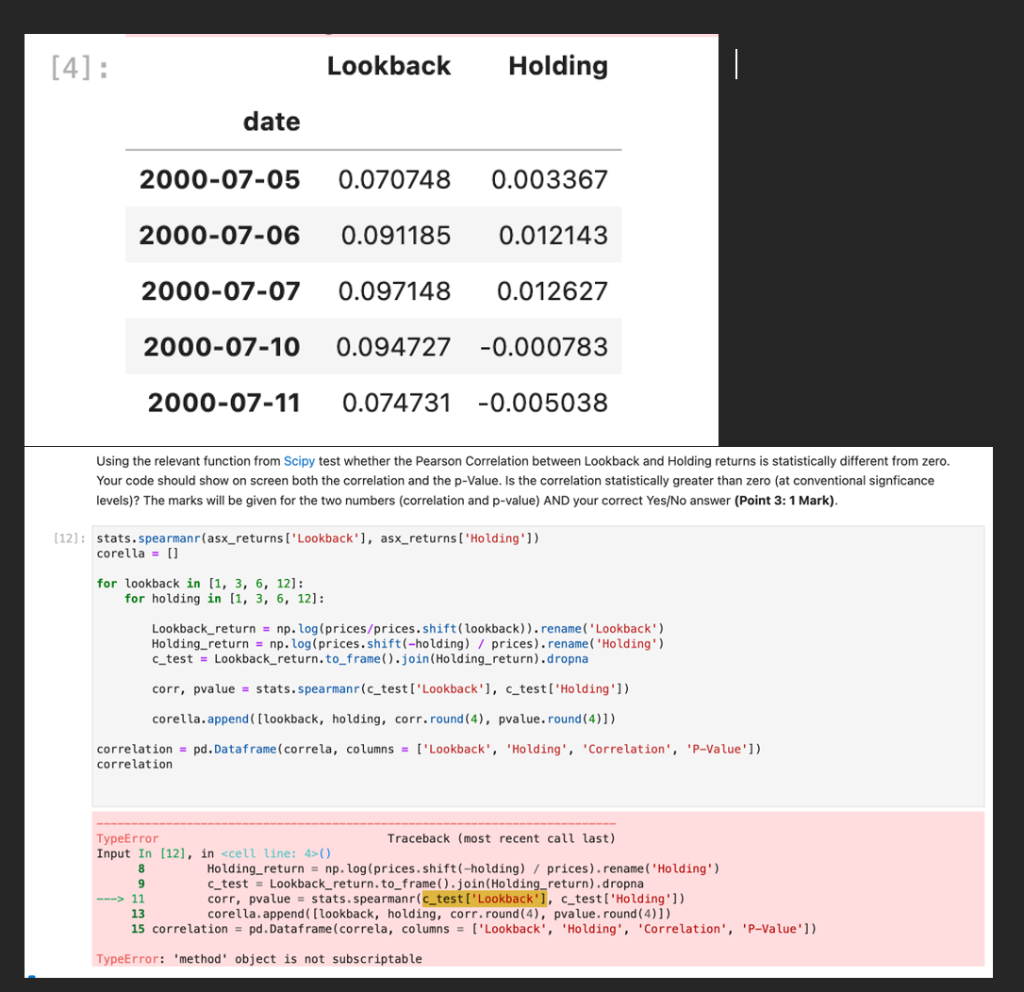
















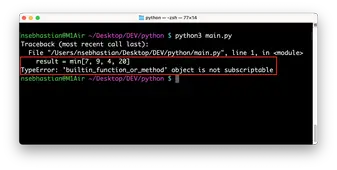




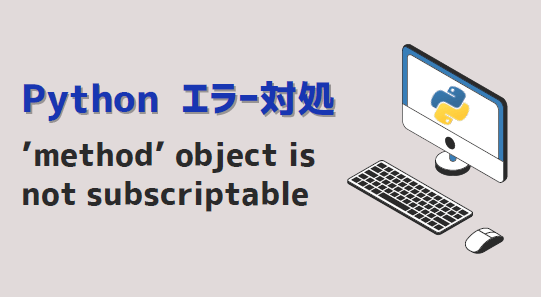




_how-to-fix-9234typeerror-39nonetype39-object-is-not-subscriptable9234-error.jpg)
Article link: typeerror ‘method’ object is not subscriptable.
Learn more about the topic typeerror ‘method’ object is not subscriptable.
- How to fix TypeError: ‘method’ object is not subscriptable
- How to Solve Python TypeError: ‘method’ object is not …
- [Solved] TypeError: method Object is not Subscriptable
- ‘method’ object is not subscriptable. Don’t know what’s wrong
- Python TypeError: ‘method’ object is not subscriptable Solution
- TypeError: ‘method’ object is not subscriptable in Python
- (Solved) Python TypeError ‘Method’ Object is Not Subscriptable
- TypeError: builtin_function_or_method object is not …
- TypeError: builtin_function_or_method object is not …
- Python Nonetype Object Is Not Subscriptable – MindMajix Community
- Fix the typeerror ‘method’ object is not subscriptable in Python …
- Typeerror: method object is not subscriptable – Itsourcecode.com
See more: nhanvietluanvan.com/luat-hoc